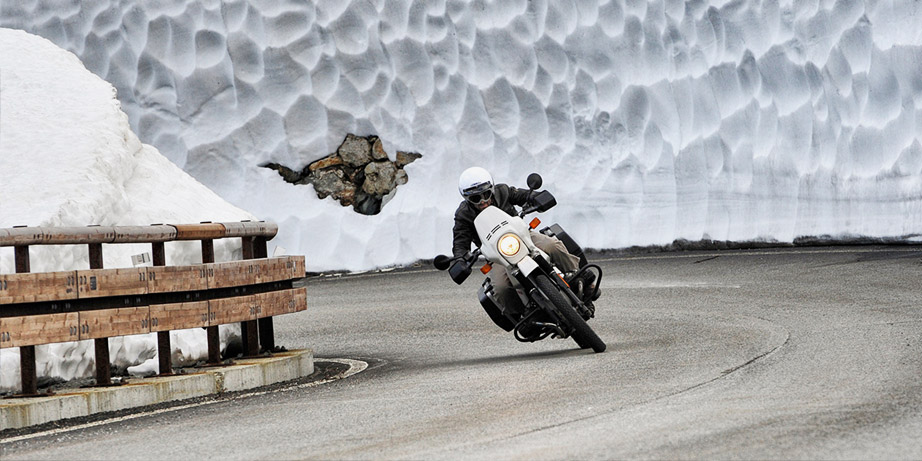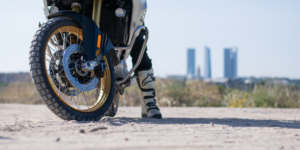Winter can bring some tough conditions. Snow, wind, hail and in the best cases, intense cold weather is what awaits many motorbike users if we live in zones where this time of the year makes us all suffer. To ride the motorbike in the snow, first of all, we have to take into account a couple of factors that can be determining. It’s very different if the situation catches us by surprise, for a one-time bad forecast, and another thing is to face a route or travel knowing that we can find some adverse climate.
There are some winter concentrations that, by the time of the year in which they are celebrated and the geographic location, what’s really surprising is that there was nicer weather than normal.
One of the most known ones for the extreme conditions is the Elefantentreffen (Elephant hangout in English) that is celebrated in Germany, close to the border with the Czech Republic, in the Baviera woods. The temperature is around -20ºC. Therefore, who thinks to go are prepared enough to face those conditions.
The main thing when encountering a snow-in-the-road situation is to keep the calm and common sense. We’ll try to track the print that the precedent vehicles have left. We have to look for the maximum contact with the clean snow surface, don’t do heavy movements, anticipate possible brakings keeping the distance and touching the brake very gently to avoid some ice layers to form in the brake pads.
In these conditions, the braking process is to try stabilising the direction of the motorbike with the back brake, touching it and, at the same time, gradually executing the front one. There’s an advantage for the ABS motorbikes, but that is not the definitive solution.
We advise you to have a relation with the motorbike gears as long as possible, so we won’t have the feeling that the wheel is fake pulling all the time with the motorbike in the snow.
Besides, your posture must be relaxed, careful in case we have to put the foot on the floor and controlling the riding from the handlebar and not with the body. The pronounced body movements tend to get far from the balance shaft and are transmitted directly on the motorbike.
The attention must be maximum, avoiding sombre zones very conducive to form ice plaques or extreme precautions if someone has spread salt.
There are some little tricks in case it starts getting serious and we don’t have adequate tyres, for example putting plastic flanges around the rubber. Another formula is doing the exact same thing, but with a rope, the fastening straps of the luggage or even with your pants’ belt.
We hope you don’t have to arrive at that extreme, but above all remember, if you go with the motorbike in the snow, you can stop in the first shelter you find and you wait until the conditions get better or someone helps you. Good luck and prevention.







